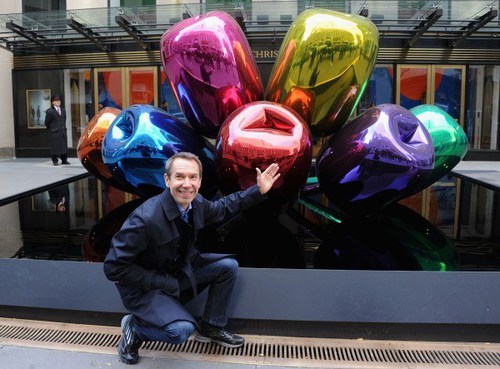
Why, he can promote this stuff one-handed. image: getty via gallerist ny
Though I was excited as could be by the invitation to what was billed as “an exceptional photo call,” I did not attend Jeff Koons’ appearance in front of his tulips, which were for sale last month in front of Christie’s.
Fortunately, Gallerist NY’s Rozalia Jovanovic was there, reporting live from the scene [“At Christie’s, Jeff Koons Poses With ‘Tulips'”]:
While the creation of the sculpture might be over, Mr. Koons is nonetheless still hard at work on crafting and maintaining his image. Despite having a broken wrist, which was in a cast (the result of a horseback-riding incident), he was charming and upbeat, much like a professional model, seeking the best angle, variously standing or sitting, feigning at turns surprise and conviviality, and even giving us some pointers: “Come around from here,” and, “I can stand over there.” Mr. Koons once again proved that he is his own greatest creation.
Koons may be the most manipulatively congenial about it, but he is by no means the only artist to ham it up for the cameras.
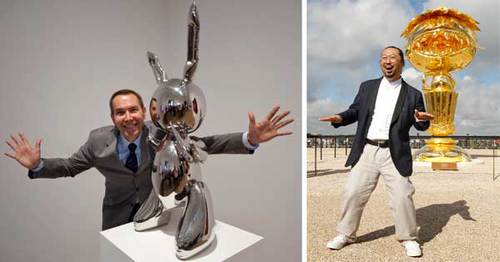
Here he is, goofin’ with both hands, alongside his fellow “master of the art” of branding,, Takashi Murakami, in The Art Newspaper’s Canal Street knockoff version of post-Basel critical reflection that starts with, “Have there ever been better bedfellows than art and luxury?”
And move over, here’s Damien Hirst at a photo opp for the Spot Challenge:
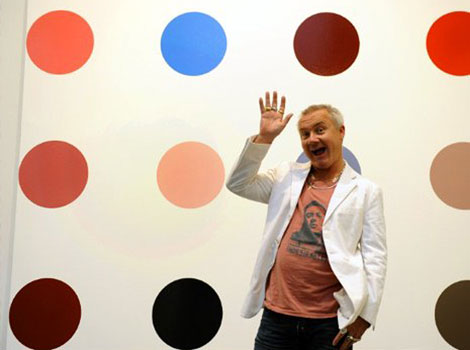
This is obviously a particular and not-unbiased sample. But there are a few inter-related things I’m seeing here. The least interesting is how these three all adopt roughly the same persona: the artist-as-minstrel-clown. Whether court jester is a step up, down, or a lateral move, it’s just a LULZ-ier example of Jasper Johns’ characterization of artists as the elite of the servant class.

No, no, don’t get up. image: Andrew Testa for nyt
Koons’ work–and his workin’ it–are revealing, though, and I mean literally. You can see the photo scrum right there, the wire service joes with their daily list of photo calls to make, reflected in the mirrored surface of his balloon tulips. Like GWB White House stagecraft manager Scott Sforza, Koons knows that all these guys want is their shot, and he is all too happy to help them get it. Koons’ mugging and poses are the visual equivalents of his banal soundbites about his work; he’s very much embodying, reflecting, transmuting into the sycophantic, celebrity- and money-driven mediated culture around him.
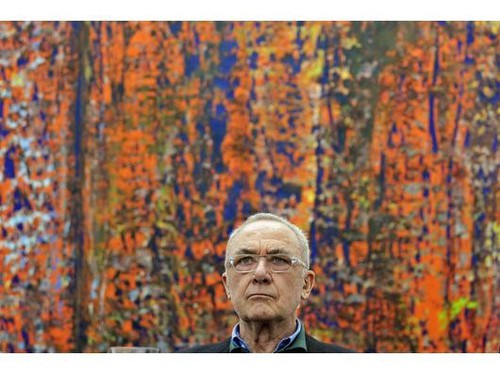
Gerhard Richter photo opp at the Ludwig in Köln, 2008, image: ddp via derwesten.de
The prevalence of this image genre and the media & publicity system that produces it inevitably colors our view of the art and the artists. I think most artists are very aware of that, and thus harbor anxiety or at least ambivalence toward the photo opp and feature experience. Managing the unpleasantness, wanting to support their own work, wanting not to be difficult, but really wanting to do almost anything else at that moment, they often acquiesce to these photographers’ weird, stilted, or just clichéed compositions of The Artist Next To Her Work.
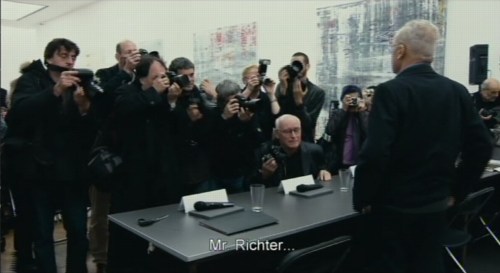
For some, it’s an apparently unavoidable, barely tolerable evil. There’s a stark, kind of ridiculous scene that interrupts Corinna Belz’ Gerhard Richter Painting, a press preview of the artist’s 2008-9 show of late/recent Abstrakte Bilder at the Museum Ludwig in Köln, where it’s clear how much Richter hates the experience and the context. And the process [“I just want to get out of here.”], and the pictures that result from it. [“Oh, just throw them all away.”] I’m guessing that low shot above was taken by the bald guy in this screencap:
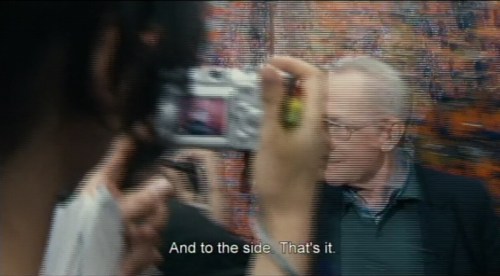
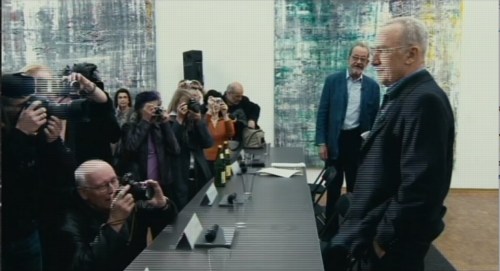
We’re used to consuming such images without much concern, but hearing the artist’s empty answers to the journalists’ simultaneously preening and undermining questions, you really start to wonder. And by you, I mean, of course, me.

Deitch coming to MOCA, image: Lawrence K Ho for latimes
Anyway, if I were a tumblrin’ sort of guy, WTF Poses With Art would easily be the second or third tumblr I’d make. It’d depend on whether to treat photos of museum directors & curators with Meaningful Art in soft focus behind them as a category, or as its own thing.
